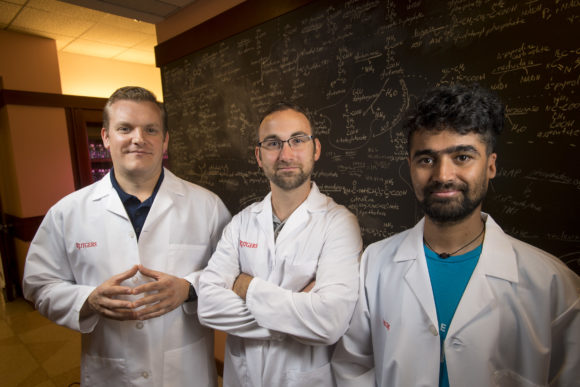NEW BRUNSWICK, N.J. — Using a computer and a protein synthesizer, Josh Mancini builds proteins that are supposed to resemble those that would have existed 4 billion years ago, before life arose on Earth.
He places millions of the tiny protein molecules, resembling white powder, into an oxygen-free chamber that mimics the conditions of the primordial Earth. He adds nickel – an element these pre-life proteins might have bonded with for catalysis to occur. And he tests to see if a similar reaction takes place in his chamber at Rutgers University–New Brunswick’s Department of Marine Science and at the Center for Advanced Biotechnology and Medicine Building.
If it does, that will mean Rutgers’ NASA-funded ENIGMA team has taken a step closer to understanding how life arose on earth, and the likelihood of its happening elsewhere.
ENIGMA is part of NASA’s focus on astrobiology – the study of whether extraterrestrial life exists, and whether we can find it. The Rutgers program focuses on a key astrobiological question: How did proteins emerge from the chemistry of the early Earth, and then evolve to become the basis of life itself?

